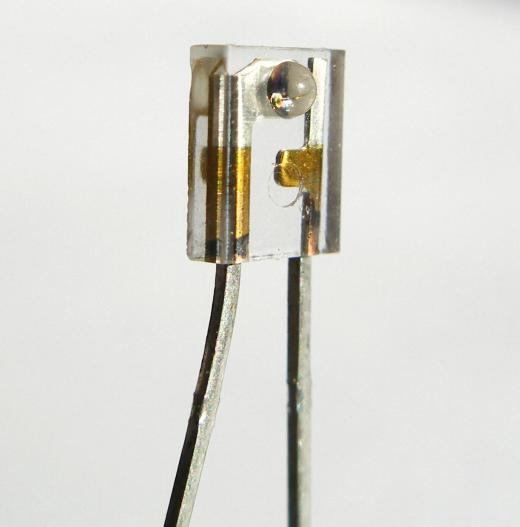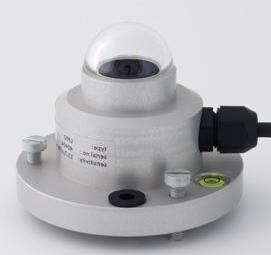What is a Pyranometer?
A pyranometer is an instrument designed to measure the power of the heat and light from the Sun. Used primarily in the meteorological fields, solar radiation is identified with a pyranometer placed on a flat surface. The full frequency spectrum of electromagnetic radiation projected by the Sun and received on the Earth's surface impacts sensors within the device, which measures the density of the fluctuations in the full field of 180 degrees surrounding the instrument.
A solar pyranometer works by measuring the number of photons, small units of light, that impact either a chemical or physical device within the instrument over time. Usually, this is most readily useful in identifying the ultraviolet and visible-light wavelengths of the spectrum. Pyranometers are generally unpowered, as each of the components in the system either reacts to or is influenced by the solar radiation directly.

Most chemical-based pyranometers use a solution of photoreactive and heat-sensitive chemicals that can measure the total level of electromagnetic radiation. The chemical itself requires a process by which the radiation is identifiable from absorbed light. This is known as quantum yield and produces a reaction due to the lack of light, making each chemical useful in the pyranometer. The most common examples of chemicals used in these instruments include potassium ferrioxalate, monochloroacetic acid and malachite green leucocyanide.

Physical types of pyranometers include bolometers, thermopiles and photodiodes. Bolometers use a thin layer of metal attached to a heat sink which maintains a constant temperature, allowing the device to recognize solar radiation levels. Thermopiles convert heat into electricity through coupled devices in a series, measuring voltage output to determine radiation. Photodiodes use a similar technique to convert light into current or voltage, allowing measurement.
The level of possible measurement in a pyranometer varies depending on the position of the Sun itself. Ideal conditions are supplied by the Sun being directly overhead, however, certain measurements can be made from different angles, as long as the radiation impact is identified. When the Sun is located at a 90 degree angle from the instrument, no measurement can be made. Normal surface radiation, caused by the Sun being angled between 0.5 and 60 degrees can be measured proportionally. However, when the Sun hits its zenith, directly above the device, the measurement is perfectly accurate.
Most pyranometers are fitted with a glass dome to ensure the proper directional attributes. This limits the response to within 300 to 2,800 nanometers, the ideal measurement parameters. It also has secondary purposes in preserving the full 180 degree field and providing safety shielding.
AS FEATURED ON:
AS FEATURED ON:












Discussion Comments
@bythewell - I guess it depends on where you live and how much you are willing to spend. There are usually quite good indications of what your sun quality is like if you have a look online.
A pyranometer is going to cost at least a couple of hundred dollars. That might be worth it if you don't have access to good data about your region, and you might want to consider it a good educational tool for your kids as well. I like the idea of having a range of climatological measuring tools around for them to have a go at scientific records.
On the other hand, I think you would be better off thinking in terms of how long you're going to be outside to limit exposure.
If you're worried about vitamin D, you can always go and sit outside for ten minutes per day with your arms bare. That's generally all a fair skinned person needs.
I wonder if it would actually be worth buying a pyranometer.
I have very fair skin and I often have to cover up and use sunscreen even when it is cloudy out. It would be nice to be able to really tell exactly when I need to be more cautious than usual.
I know some might say the answer to that is "always" but you know there have been plenty of cases of people developing vitamin D deficiency because they never let sunlight touch their skin when they went outside (with sunblock as well as clothes and so forth).
It's difficult to strike that balance, because I don't want to expose myself to skin cancer either. If I had a pyranometer, it might be easier to judge.
Post your comments